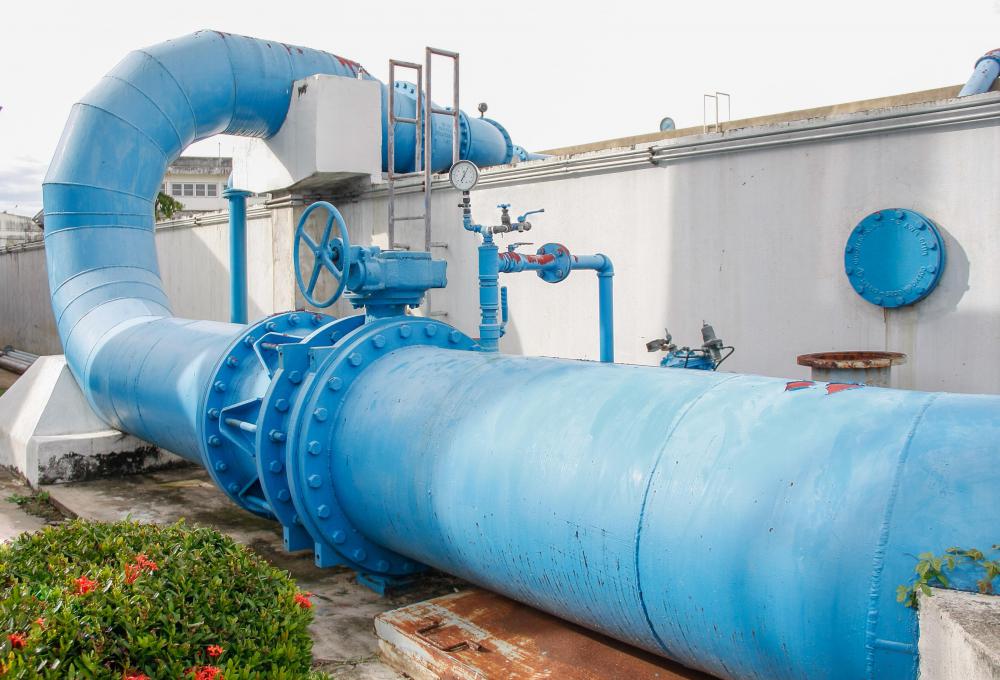At AllThingsNature, we're committed to delivering accurate, trustworthy information. Our expert-authored content is rigorously fact-checked and sourced from credible authorities. Discover how we uphold the highest standards in providing you with reliable knowledge.
What is Fluoride Pollution?
Fluoride pollution is pollution which is characterized by high levels of fluorides, a family of chemical compounds with a wide range of uses. Typically, it does not occur in a vacuum; fluorides are often found in combination with a range of industrial pollutants. Like all forms of industrial pollution, it has serious implications for the environment. Many government agencies have set specific pollution standards which are designed to identify harmful levels of fluoride so that industries which use fluorides can be regulated.
The most common source of fluoride pollution is coal, which releases fluorides when it is burned. Countries with a high concentration of coal-burning power plants, such as China, often experience very high levels of fluoride pollution as a result. In areas where coal is used as a household fuel for heating and cooking, indoor pollution can also result. Even with scrubbers and other technology in place, coal-burning power plants can generate a great deal of pollution, with fluoride only being a part of the story.

Industrial processes which involve the use of fluorides are another source of fluoride pollution. Fluoridated water is often generated during manufacturing processes, and if that water is dumped into waterways or poorly contained, it can spread into the natural environment. In addition to appearing in waterways, fluorides may also crop up in the soil, potentially damaging crops. Fluoridated waste can also be solid, in which case improper disposal may result in leaching.

For humans, fluoride pollution can be problematic when people are exposed to a high volume of fluorides as a result. Excessive intake of fluoride can cause fluorosis, a medical condition which damages the bones and teeth. Fluorides can also irritate the skin, eyes, and lungs, and sometimes they can damage the heart or cause hypocalcemia, a serious condition in which the body does not get enough calcium. Fluorosis in particular is a major problem in some regions of the world, thanks to high levels of fluoride.

This form of pollution can also hurt wildlife, especially fish, who can be trapped in waterways with high levels of fluoride and nowhere to go. Fluoride pollution can also damage crops and plants, and certain fluorides can contribute to the formation of acid rain. Increased regulation of industrial pollution in general will cut down on fluoride pollution, as will more responsible practices by companies which generate industrial waste.
Frequently Asked Questions
What is fluoride pollution and how does it occur?

Fluoride pollution refers to the contamination of ecosystems with excessive fluoride, often stemming from industrial processes like aluminum production or phosphate fertilizer manufacturing. Natural sources include volcanic activity and weathering of fluoride-containing minerals. When released into the environment, fluoride can accumulate in soil and water, disrupting local flora and fauna.
Why is fluoride pollution a concern for the environment?

Fluoride pollution is concerning because high concentrations can be toxic to plants and animals. It can lead to a condition called fluorosis, which affects teeth and bones in vertebrates, and can inhibit plant growth and reproduction. Sensitive ecosystems can be severely damaged, with ripple effects throughout the food chain, impacting biodiversity and ecological balance.
How does fluoride pollution affect animal health?

Animals exposed to fluoride pollution can suffer from dental and skeletal fluorosis, which weakens bones and teeth, leading to pain and disability. Chronic exposure can also damage soft tissues and organs, impair reproductive success, and reduce lifespan. Wildlife and domestic animals alike can be affected, with consequences for both ecological systems and human livelihoods.
Can fluoride pollution impact water supplies?

Yes, fluoride pollution can significantly impact water supplies. When fluoride enters waterways, it can accumulate to levels that exceed safety thresholds for human consumption and wildlife use. According to the World Health Organization, the guideline value for fluoride in drinking water is 1.5 mg/L to prevent dental fluorosis and other health issues.
What measures can be taken to reduce fluoride pollution?
To reduce fluoride pollution, industries must implement better waste management practices, such as using scrubbers and filters to capture fluoride emissions. Additionally, regulations and monitoring can ensure that fluoride levels remain within safe limits. Remediation techniques, like phytoremediation, can help clean up contaminated sites by using plants that absorb fluoride from the soil or water.
Is there a safe level of fluoride in the environment, and how is it determined?
There are safe levels of fluoride in the environment, which vary depending on the specific ecosystem and species present. These levels are determined by scientific research and regulatory agencies that assess the toxicity and environmental impact of fluoride. For example, the U.S. Environmental Protection Agency sets standards for fluoride in drinking water to protect human health and the environment.
AS FEATURED ON:
AS FEATURED ON:

















Discuss this Article
Post your comments